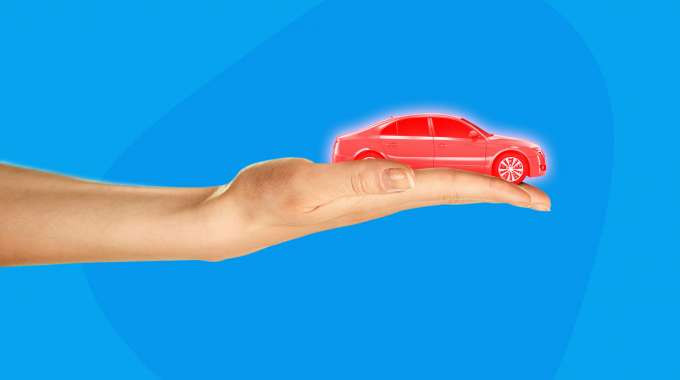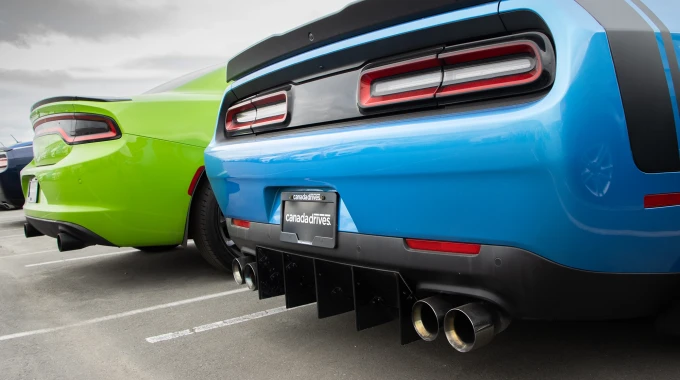
Jul 4, 2025
How to Trade In a Car That Is Not Paid Off
There are many reasons why a person might decide to trade in their vehicle, whether it be opting for a lower monthly payment or upgrading to a vehicle that better fits their lifestyle. Regardless, dealerships usually make trade-in processes quick, transparent, and easy. But how exactly does it work? And what if you still owe money on the car loan?
Trading in your vehicle—whether you still have a car loan to pay off or not— is easier than you might think. Here’s what you need to know.
1. Find your remaining loan amount
“How much do I owe on my auto loan?” and “Can I trade in a vehicle that's not paid off?”
These are common questions for anyone who is looking to trade in a financed vehicle. The calculation isn’t as simple as adding up the remaining payments until the loan term is over, though, since there may be early repayment penalties or interest calculations that factor in.
The most accurate way to determine your current loan value is to call your lender and request a payout amount. However, while it’s good information to have on hand going into a car-shopping experience, it’s not absolutely necessary since the dealership can find that information for you too.
If your car loan is already paid off, it makes the trade-in process a little simpler and you don’t have to worry about this step.
2. Know the value of your trade-in
When you’re trading in a vehicle, you’re doing just that: making a trade. Considering this, it’s imperative to know the value of what you’re trading in. Vehicles depreciate over time, but there are several factors that determine your current vehicle value.
How old is your vehicle? What’s the make and model? How’s the condition? These are all details to help you determine the trade value. At Canadian Black Book, the Value Your Car function will guide you through the valuation process for trading in, but that’s not set in stone. Market demand and condition are heavily weighted in a dealership’s trade appraisal.
The service department at a car dealership will do an overall inspection of a proposed trade vehicle. They’ll examine the condition of brakes, tires, fluids, and other mechanical parts. If a car dealership decides to accept a trade-in that has a bruised interior or exterior, the damage will lower its trade-in value. A good practice is to ensure all simple repairs are done to your vehicle before you make a trade.
Canada Drives can also provide an accurate estimate of your car's value, better yet, you can actually sell your car directly to Canada Drives if you like the offer —even if you still have an existing loan. Visit our valuation tool to get an instant offer today.
3. What does equity mean in a car?
If you’re still making car payments when the time comes to trade in or sell a vehicle, the dealership will take the value of your trade minus the current loan amount and then subtract that amount from the price of your new vehicle. The difference between your trade-in’s value and the amount owing is known as equity.You can have positive or negative equity.
What is positive equity?
If your car is worth more than the outstanding auto loan amount, it’s known as positive equity. That means that after the loan is paid off, there is a remaining balance that will be applied toward the car you’re purchasing, lowering the amount you need to borrow.
For example, if the dealership appraises your trade-in at $15,000 and your current loan balance is $9,000, you have $6,000 in equity.
As a rule of thumb, it usually takes at least two years to reach the break-even point of a car loan if you’ve financed with zero down and have average mileage and condition. After that point, you’re likely to begin building positive equity.
What is negative equity?
What that means, however, is that it’s possible to owe more on your car than what it’s worth. If the loan value is higher than the trade-in value, it’s considered negative equity. You might also hear it referred to as ‘upside down’ in a loan.
What does negative equity look like? If Jane bought a car last year for $30,000 with no money down but wants to trade it in for a new model right now, it might only be worth $20,000 due to depreciation. Her remaining loan amount could be $25,000, meaning she still owes $5,000 after the loan is paid off.
Because there’s a lien against your car until it’s paid off, it’s very difficult to sell it privately unless you can pay off the balance on your own. But trading in a car with negative equity is very simple for a dealership, within reason. The amount you’re upside-down can be tacked onto the loan for the car you’re purchasing.
Canadians who have negative equity on their trade-in vehicle will have higher monthly payments on their new car loan than if they didn’t have the trade-in. So they are taking on more debt. This isn’t good or bad, it’s just a reflection of a larger loan amount to account for the negative equity.
4. What documents are needed for trading in a car?
Whether you have equity or you’re upside-down in a car loan, completing a car trade-in has the same requirements. It’s a legal transaction with physical property changing hands, after all.
You need:
- The car’s registration documents: You’ll need to fill out a section to transfer ownership to the dealership.
- Personal identification: Of course, you’ll need to prove that you’re the person on the registration and can legally trade the car in. A driver’s license will suffice.
For obtaining an auto loan for the vehicle you’re buying, you should also bring proof of income such as a recent pay stub with year-to-date earnings and proof of residency for the loan application.
6. Do car dealerships buy used cars, and what do they do with trade-ins?
Once you’ve agreed to trade in your current vehicle for one that the dealership offers, they’ll handle the financials. Once this agreement is approved, the dealership will take possession of your old vehicle. Either way, the dealership takes care of paying out your old car loan balance.
Dealerships make a significant portion of their profit through used car sales, and they view trade-ins as replenishment to their car inventory. A good-quality used car is in high demand and the dealership will put it through a process known as reconditioning. That involves mechanical repairs, safety certification, and detailing the interior and exterior.
If your vehicle can’t be reconditioned by the dealership or it’s not suitable for their inventory (too old or too many kilometres, etc.), they’ll do one of two things.
Wholesale
A dealer who doesn’t think that the car will be a good fit for their lot might opt for wholesaling the vehicle. If the vehicle is older than six years and has a lot of mileage on the clock, it will be put through a series of auto resale tests. If it doesn’t pass the requirements of that dealership they may opt to wholesale the vehicle to an auto broker.
Wholesaling might also be the outcome if the dealership already has multiple models of the same car on the lot, or if the traded-in car is a different brand compared to what the dealership carries. If you’re planning on trading in a much older vehicle, you might want to consider selling it to an independent car lot.
Auction
Dealerships often send cars to auction that don’t fit their needs on the lot. That can include special use or modified vehicles, oddball colours or trims that aren’t likely to sell quickly, or vehicles that are in rough condition. Dealerships might make a little money off auctioning cars, but it’s risky and they need to consider potential losses too. Sometimes trade appraisals seem low, but it’s because the dealership is accounting for risk.
If you want to trade in a vehicle that is in poor condition and has high mileage, you might make more money by selling privately yourself. Although, it’s important to note that privately sold vehicles can take a lot of effort and time to find a potential buyer. Trading in a vehicle is straightforward and handled completely by the dealership, so it often makes the most sense.
7. Read the contract details
You might run into a dealership that promises to pay off all negative equity on your old vehicle. It’s best to be wary of promises that sound too good to be true. The hard truth is your vehicle value and the loan amount are completely independent. If there is negative equity to be accounted for it will end up on your next car loan, increasing the payments. Essentially making it a more expensive car loan.
If a dealer verbally offers you a deal, ensure that it’s written out in the contract. Ask the dealership any question you have about the loan agreement, and don’t feel pressure to trade with a dealership if you don't think the value offered is fair.
8. Is there such a thing as a vehicle trade-in tax credit?
When you trade in your vehicle at a dealership in Canada, you're eligible for a sales-tax reduction rather than a formal tax credit. Essentially, the dealer subtracts the trade-in value from your new car’s purchase price, and you only pay sales tax (GST, HST, or PST) on the difference. For example, in Ontario’s 13% HST, if your new vehicle costs $20,000 and your trade-in is valued at $7,000, you’ll only be taxed on the remaining $13,000—saving you $910 in tax right at the point of sale .
This applies across all provinces, though the tax structure (GST, HST, PST, QST) varies by region. In British Columbia, for instance, a $10,000 purchase minus a $6,000 trade-in means you pay 12% PST on only $4,000—amounting to a $480 tax bill. Importantly, this rebate-like benefit only works when you purchase or lease through a dealer and apply the trade-in as partial payment. If you sell your old car privately and then buy a new one, you'll pay tax on the full amount without receiving this tax reduction.
This is something that is worth looking into when you are weighing the pros and cons of trading in your vehicle at a dealership versus selling your current vehicle privately. Trading in to a dealer will get you a tax break on your new car, but you may not be able to get as much money for your car as you could selling it privately. On the flip side, selling privately takes additional effort, so the two options may just balance out in the end.
An easy alternative to trading in your car.
An alternative to trading in your car is to just sell your car and put the proceeds from the sale towards whatever new car you decide to buy. It's not uncommon to get more money by selling your car than by trading it in, but when it comes to selling a car privately it may end up being more work than it's worth
Canada Drives gives you an easier alternative. With Canada Drives you can get an offer instantly by completing a short online appraisal here. If you are happy with the offer all you have to do is drop off your car at a convenient Canada Drives location and get paid! If you still owe money on your car Canada Drives can handle the process of paying off the balance owed to your lender and you'll get the difference.







